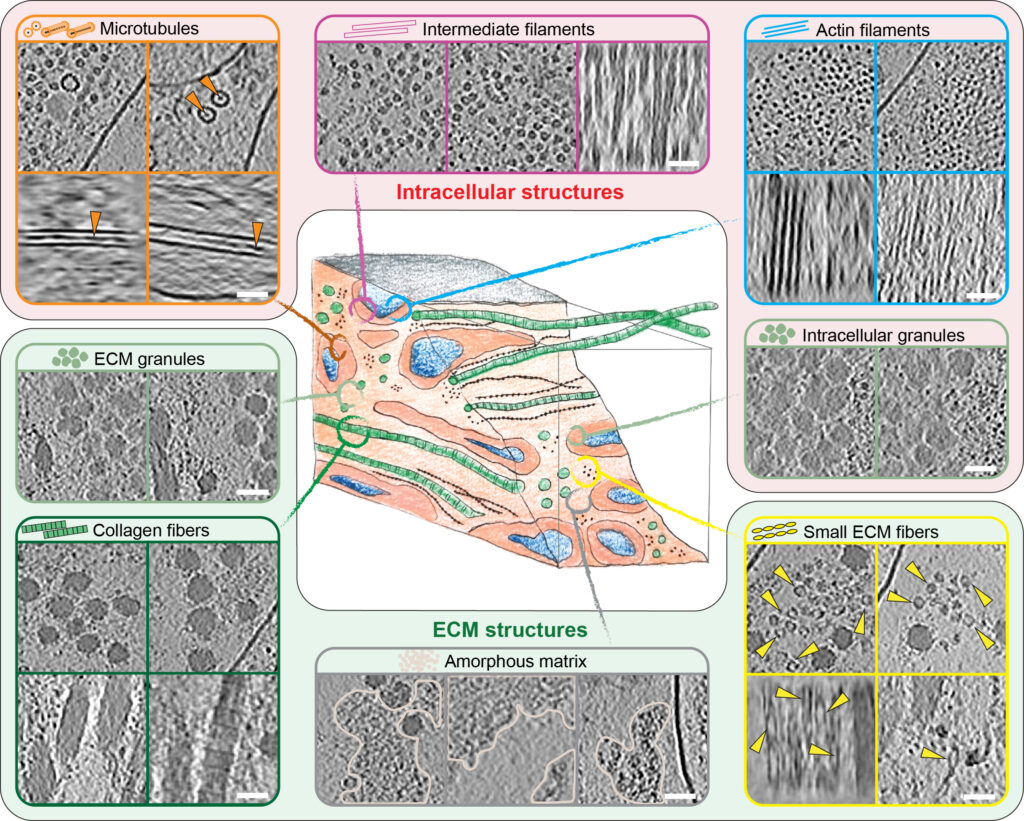Structural Biology of the Extracellular Matrix

The extracellular matrix (ECM) plays a pivotal role in regulating many intracellular signaling pathways via its biomechanical properties. While we have a thorough understanding of the molecular composition of the ECM, its structural landscape at the molecular level remains uncharted. This is due to the lack of structural biology methods to study such complex 3D samples in a natively preserved state at high resolution. Such information is, however, needed to unambiguously elucidate how larger ECM assemblies are formed upon secretion from cells and how the reciprocal interactions between matrix-secreting cells, migrating cells (such as studied in our lab) and the ECM regulate their behavior.
Driven by the goal to take structural biology to more complex specimens than commonly studied by cryo-ET, we have established cryo-focused ion beam milling scanning electron microscopy (cryo-FIBSEM) and the lift-out technique at ISTA. To answer the open questions on ECM biology, which eventually would pave the way for studying cell migration in 3D at molecular resolution, we have developed a platform employing cell-derived matrices (CDM) compatible with lift-out ion beam milling and cryo-ET. This allows us to visualize the ECM in its native state within the context of matrix-secreting and remodeling cells.
For more info, see our recent work by Zens B et al., Journal of Cell Biology, 2024